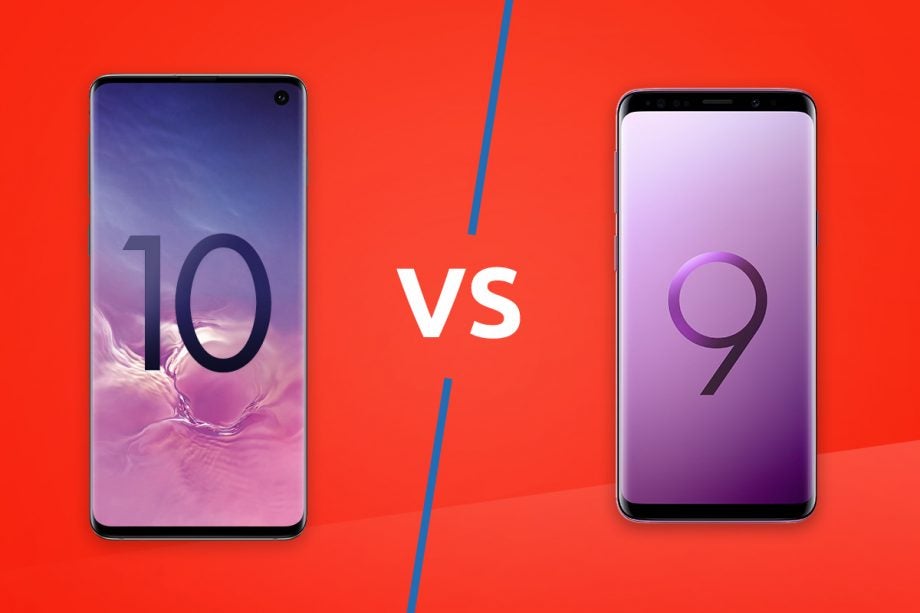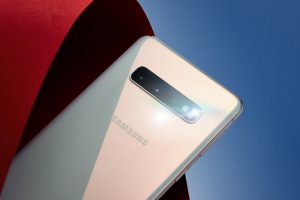Samsung Galaxy S10 vs Samsung Galaxy S9: Should you upgrade?

Samsung Galaxy S10 vs Galaxy S9: Should you upgrade?
The Samsung Galaxy S10 followed on from the Samsung Galaxy S9 just as sure as night follows day. But was it the generational leap that many were hoping for?
On paper the Galaxy S10 clearly gets the win, as you might expect. It’s got a bigger display, a faster processor, and a more flexible camera to name just the three core components.
There’s a very clear spec divide between these two phones. But in the following feature we’ll also run through the differences in handling and the overall ownership experience based on our extensive time with both phones.
We’ll also keep in mind the fact that the S10 is significantly more expensive than its predecessor. Now that it’s no longer the top dog in the family, you can grab the S9 for around 40% less money than the S10.
So, does the Galaxy S10 trounce the old timer, or are all those flashy new features so much bluster when you get down to it?
Galaxy S10 vs Galaxy S9 – Specs and features
| Galaxy S10 | Galaxy S9 | |
|---|---|---|
| Display | 6.1-inch, 19:9 (Edge), Wide Quad HD+, Dynamic AMOLED+ | 5.8-inch, 18.5:9 (Edge), Wide Quad HD+ AMOLED |
| Processor | Samsung Exynos 9820 | Samsung Exynos 9810 |
| RAM | 8GB | 4GB |
| Rear camera | Dual Pixel 12-megapixel OIS f/1.5 – f/2.4 AF + 16-megapixel ultra-wide f/2.2 FF + 12-megapixel telephoto OIS f/2.4 AF |
Dual Pixel 12-megapixel OIS f/1.5 – f/2.4 AF |
| Front camera | Dual Pixel 10-megapixel f/1.9 AF | 8-megapixel f/1.7 AF |
| Battery | 3400mAh | 3000mAh |
| Security | In-display ultrasonic fingerprint sensor 2D face recognition |
Rear-mounted fingerprint sensor 2D face recognition Iris unlock |
| Storage | 128/512GB | 64/128/256GB |
As we mentioned in the intro, this is a pretty lop-sided fight if we’re going by specs and features alone. The Samsung Galaxy S10 offers clear improvements over the Galaxy S9 in almost every way.
That starts with raw performance. The Galaxy S10’s Exynos 9820 chipset is a generation ahead of the S9’s Exynos 9810, built using a smaller and thus more efficient manufacturing process (8nm vs 10nm).
Perhaps more significantly, the S10’s faster processor is backed by double the amount of RAM – 8GB rather than the S9’s 4GB. Given Android’s memory-hungry nature, and the tendency for Samsung phones to get slower as they age and fill up, this is a notable advantage.
Related: Best smartphones

Future-proofing aside, the practical performance difference doesn’t seem so pronounced. In fact, we can’t say that the S10 feels any faster than a fresh-out-of-the-box S9. Sure, the benchmarks show a clear lead for the new phone, and there are marginal improvements to app opening times and game loading times. But it’s nothing that screams “upgrade me now”.
It’s a similar case when it comes to comparing displays. Yes, the Galaxy S10 display is slightly larger (6.1-inches rather than 5.8-inches). It also boasts more robust support for the HDR10+ standard as well as a superior maximum brightness of 1200 nits when conditions demand it.
But the simple truth is that both phones pack awesome, colour-rich, well-calibrated quad HD+ Super AMOLED displays. Yes, the Galaxy S10 screen is slightly better, but the advancement feels incremental in day to day usage.
More meaningful is the Galaxy S10’s increased storage, with the default model packing 128GB. That’s double the S9 equivalent, and equal to the middle S9 model. At the top end, the S10’s 512GB option again provides double the storage of the maxed out S9’s 256GB.

The Galaxy S10 battery is also larger than the S9’s by 400mAh. Coupled with a much more efficient CPU, we noticed an improvement in the stamina stakes. It’s not a huge leap, and you’re still basically looking at a nightly charge for both. But given the lack of progress made in this department from the Galaxy S8 to the S9, any progress is welcome.
Wireless charging is present on both phones, but the Galaxy S10 gains the nifty ability to charge other devices by laying them on top of it.
One S10 feature we’re not so sure about is the in-display fingerprint sensor. Don’t get us wrong, it works pretty well, and is certainly an improvement over rival in-display efforts. But the ultrasonic technology used doesn’t seem to be quite as effective as the classic rear-mounted fingerprint sensor on the Galaxy S9. It requires a firmer press, and we registered a lot more failed attempts.

Galaxy S10 vs Galaxy S9 – Look and feel
Samsung has made the best-looking phones for a few generations now, and both of these phones are pretty darned handsome. They share a basic design language too, with dual-curved displays, metal rims, and glass on the front and back.
But the Galaxy S10 takes that design to the next level. The introduction of an Infinity-O display means that the front camera is situated on a little island in the top right corner of the screen.
This can be a little disconcerting when it comes to media playback and many third party apps – something the Galaxy S9 doesn’t have any worries about. Conversely, Samsung’s new approach means that the Galaxy S10 has a teeny-tiny forehead and chin. It’s nearly all screen, and the Galaxy S9 looks a little clumsy and dated by comparison.

That feeling continues when you flip the phones over, as the Galaxy S9’s ugly rear-mounted fingerprint sensor has been erased and replaced with that invisible in-display alternative. The S10 is just a cleaner, more sophisticated design.
In the hand, however, both of these devices feel svelte and high quality. The Galaxy S9 is actually fractionally narrower and shorter than the S10, owing to its smaller display. However, it’s also a little thicker and heavier.
Galaxy S10 vs Galaxy S9 – How good are the photos?
In the year that passed between the Galaxy S9 and the Galaxy S10, the latter has sprouted not one but two additional cameras. Both phones have a 12-megapixel main camera with with an aperture that can between f/1.5 and f/2.4.
But the Galaxy S10 also has a 16-megapixel f/2.2 aperture super-wide-angle fixed-focus sensor for those epic wide shots, and a 12-megapixel telephoto autofocus sensor with an f/2.4 aperture and OIS for zoomed in snaps.

Suffice to say, the Galaxy S10 camera offering is much more flexible than the single-lens Galaxy S10. But it’s that main camera that’s going to be taking most of your shots, and the results from this aren’t a million miles apart from those of the S9.
That said, we did notice that the Galaxy S10 camera has improved a lot when it comes to exposure, while the HDR mode has also taken a step forward from the S9.
The newer phone’s camera just seems to be that little bit more reliable and consistent than its predecessor in most lighting conditions, even if they both tend to yield similar results.
Galaxy S10 vs Galaxy S9 – How much does it cost?
Samsung is currently selling the 64GB Galaxy S9 for £499 on its UK website. That’s a whopping £300 less than the equivalent 128GB Galaxy S10 from the same source.
The 512GB Galaxy S10 will set you back £999, though the equivalent Galaxy S9 model (with 256GB of storage) is a lot harder to find online these days. You might be able to find them from reputable online retailers for around the £600 mark.
Either way, there are huge savings to be made if you opt for the older model.
- Read our full Samsung Galaxy S10 review for more in-depth look
Verdict
At the time of the Galaxy S9’s release, we were a little disappointed at how little progress had been made over the Galaxy S8. We had no such complaints about the Galaxy S10, which takes a number of noticeable steps forward.
Overall, we stand by our conclusion that “The Samsung Galaxy S10 is one of the best Android phones you can buy today”. But the fact that the Galaxy S9 is so much cheaper these days adds an extra note of intrigue to our deliberations.
If you have the money, the newer S10 is without doubt a better and more future-proof pick. But opting for the S9 and saving £300 on a phone that’s functionally very similar is a pretty smart choice for the here and now.


